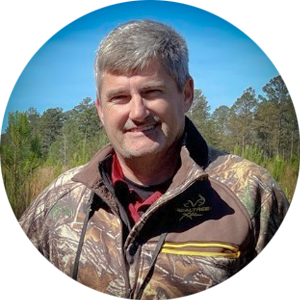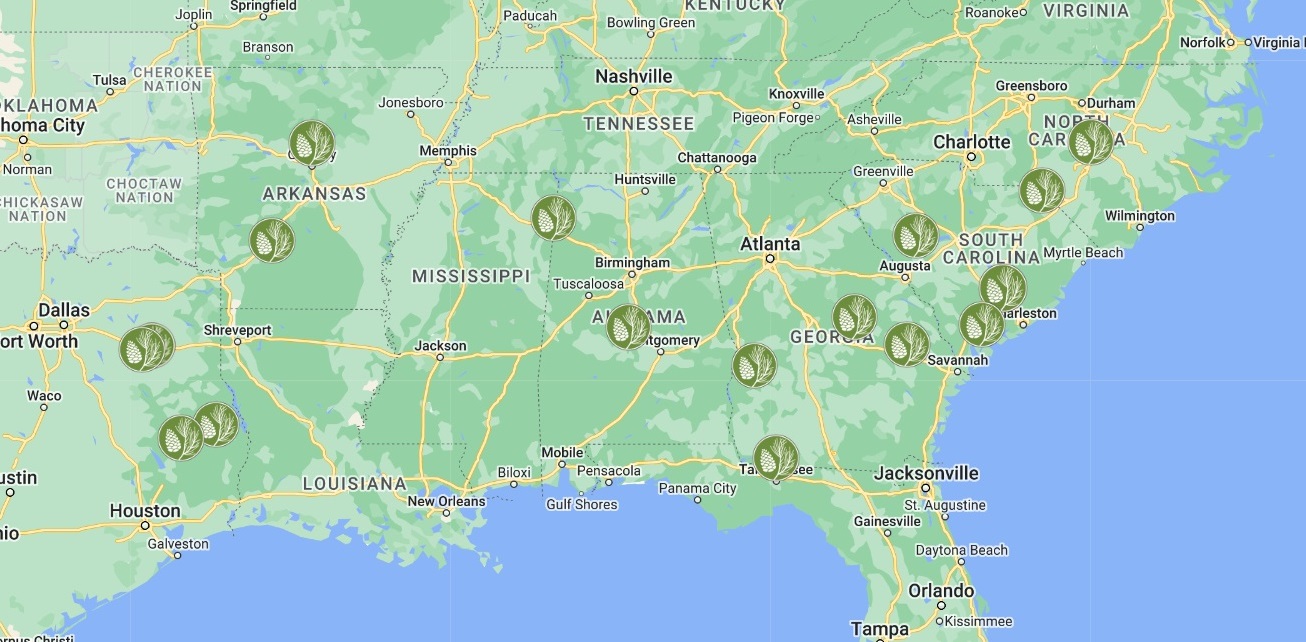
Authored by Jason Watson, M.S., R.F.
Jason is the ArborGen Director of United States Sales.
Long-term forestry research has provided a clear understanding of how Loblolly Pine has adapted from New Jersey to Texas to local climatic conditions. Loblolly Pine varies in its ability to withstand cold temperatures depending on where the original parent trees were from.
This research examined the survival and vigor of loblolly seed sources, or provenances, planted across the South in a variety of conditions with a range of temperatures. US Forest Service scientists then developed planting zones to which these provenances are well-adapted. These zones for forestry are a modification of USDA Plant Hardiness zones you may have seen at your local garden center store.
The most important climatic variable for pine is the average annual minimum temperature.
With some areas of the Southeast experiencing very cold weather the last few winter months, choosing the right climate-adapted pine tree for your area has never been more important.

Extensive research has shown that seedlings can survive and grow well in locations up to five degrees colder than the seed source origin.
In other words, Loblolly Pine seed sources from warmer climates can grow faster as long as they are planted in an area that is not more than five degrees colder from the origin of the seed source.

Failure to follow these seed source movement guidelines can lead to catastrophic loss.
Planting the wrong seedlings in the wrong geographic area threatens initial seedling survival.
Still, even if they survive, the cold temperatures can limit tree root growth due to a lack of adaptability to cooler soil temperatures.
In recent years, reports of survival problems in northern North Carolina and Virginia suggest that seedling families were planted in areas with temperatures too low for them.
Our Reforestation Advisors use ArborGen’s proprietary FamInfo database with the Annual MinTemps for every county where loblolly pine can be planted. ArborGen has specific families well-tested for adaptability for these colder areas. You can be sure that your Reforestation Advisor will select the appropriate seedling families adapted to the minimum temperatures occurring in your area to survive and grow well.
Look at this published article by R.C. Schmidtling with the United States Forest Service on “Southern Pine Seed Sources” for more information on why it is critical to know the annual minimum temperature your seedlings can tolerate before planting.
Long-term forestry research has provided a clear understanding of how Loblolly Pine has adapted from New Jersey to Texas to local climatic conditions. Loblolly Pine varies in its ability to withstand cold temperatures depending on where the original parent trees were from.
This research examined the survival and vigor of loblolly seed sources, or provenances, planted across the South. US Forest Service scientists then developed planting zones to which these provenances are well-adapted. These zones for forestry are a modification of USDA Plant Hardiness zones you may have seen at your local garden center store.












